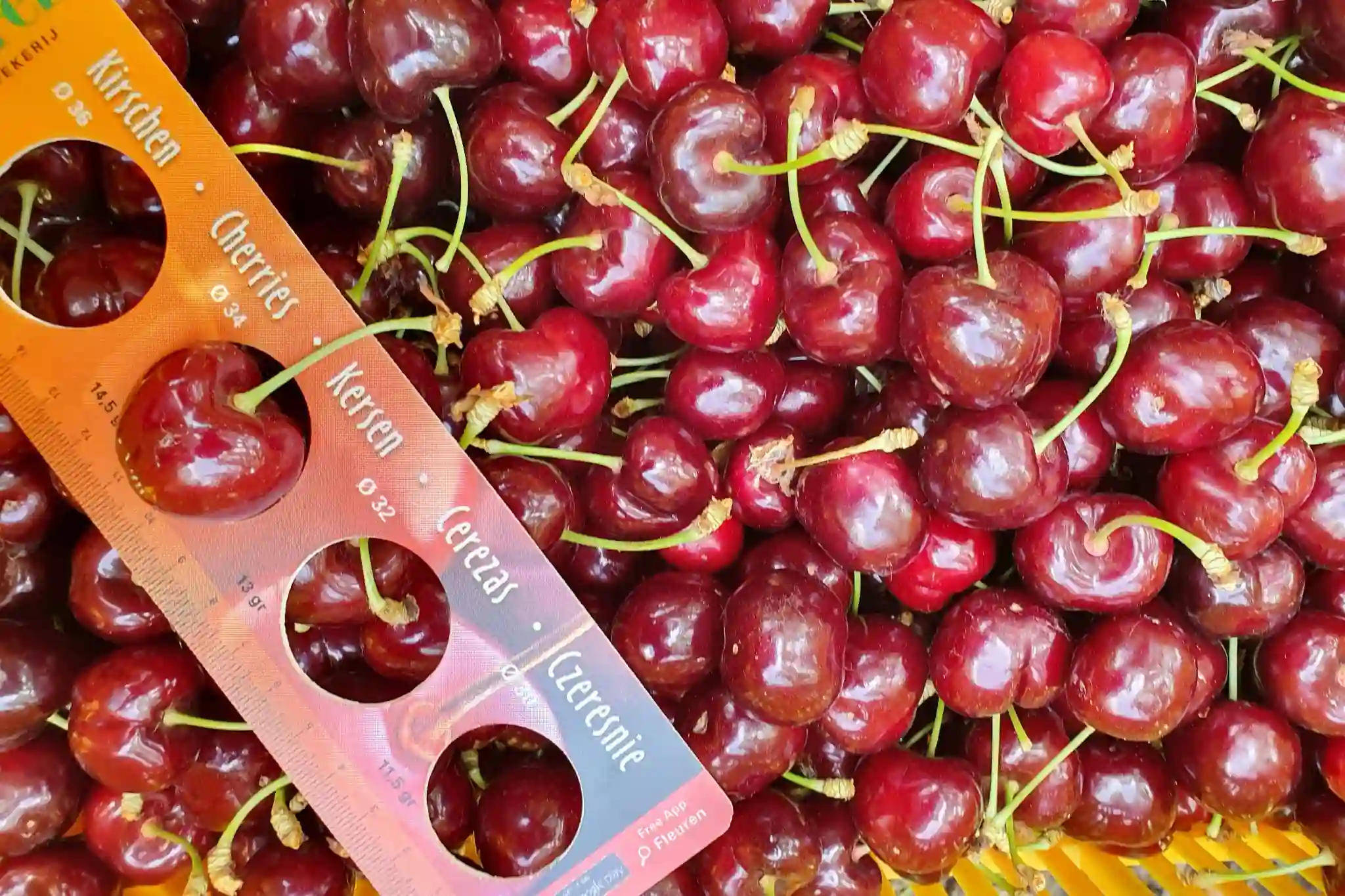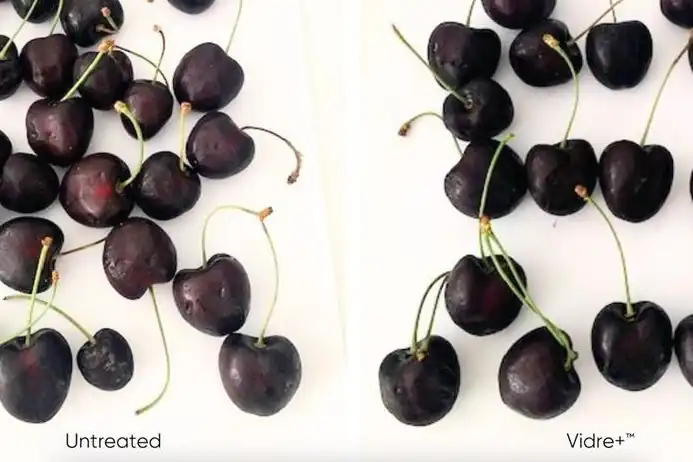As the processing sweet cherry market continues to lose its luster, two Northwest Michigan growers shared their experiences planting new fresh-market sweet cherries at modern densities — and how they could potentially deliver greater profits.
Both Isaiah Wunsch and Mark Schiller have planted high-density, fresh-market sweet cherry blocks in the past several years. Both growers hosted a visit from Good Fruit Grower in June. With a year or two of fruit production under their belts, both are cautiously optimistic about the future of high-density plantings for sweet cherries in Michigan.
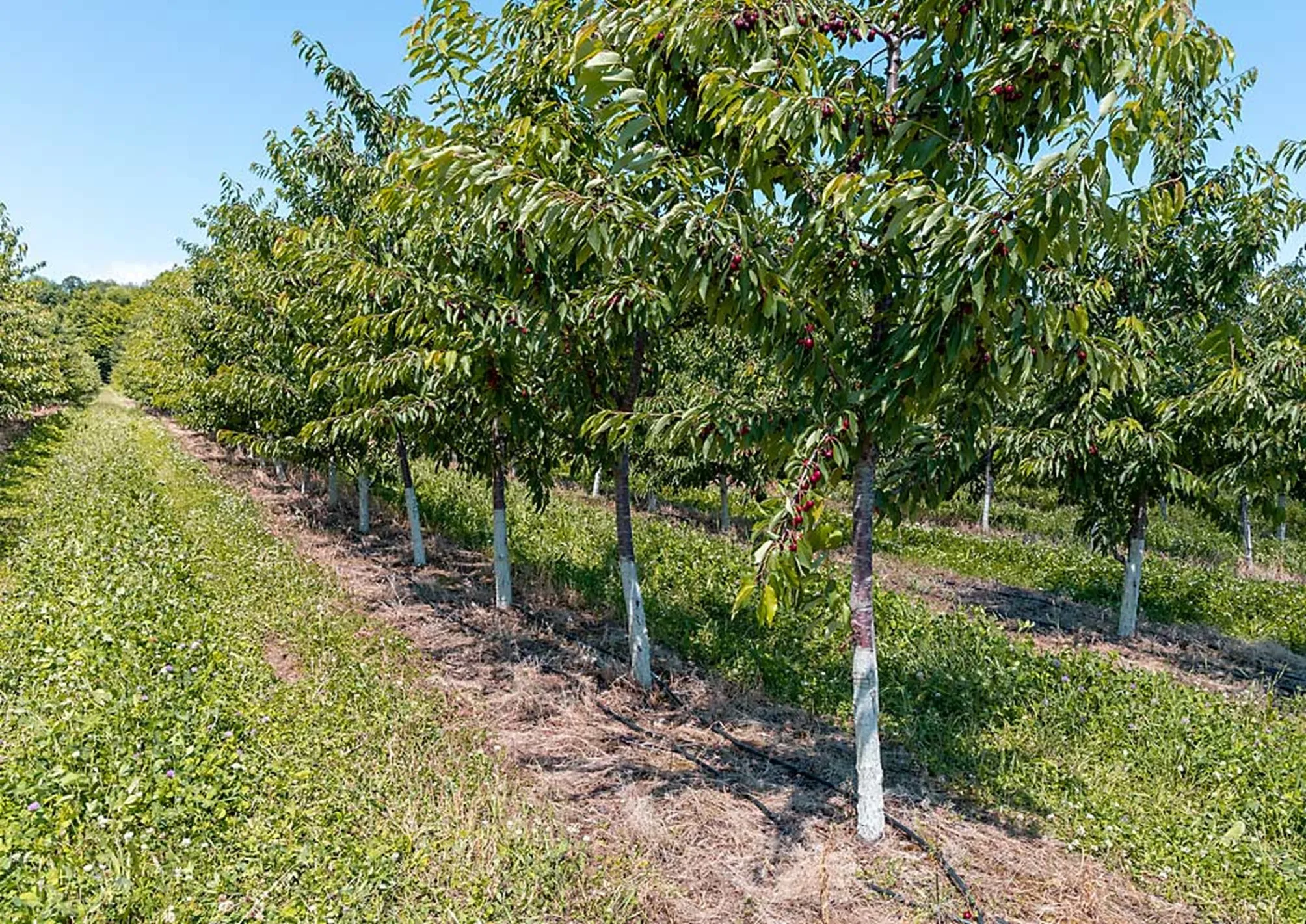 Image 1: Cherry trees were planted at Wunsch Farms in Old Mission, Michigan, in June. The trees, mostly cv Black Pearls on Gisela 6 rootstock, were planted for the fresh market and spaced 6 feet by 16 feet. (Matt Milkovich/Good Fruit Grower).
Image 1: Cherry trees were planted at Wunsch Farms in Old Mission, Michigan, in June. The trees, mostly cv Black Pearls on Gisela 6 rootstock, were planted for the fresh market and spaced 6 feet by 16 feet. (Matt Milkovich/Good Fruit Grower).
“The cost structure is more difficult with fresh, but it’s more viable,” Wunsch said. “Processing cherries were easy, but everybody was doing it.”
Wunsch Farms on Old Mission Peninsula started picking Black Pearl cherries on June 26, a very early start for the region. Planted in 2019, the Black Pearls are on Gisela 5 and Gisela 6 rootstocks, spaced 6 feet by 16 feet.
Wunsch and business partner Raul Gomez have 20 acres of high-density sweet cherries in production, with another 80 acres — planted from one to four years ago — waiting in the wings. They like Black Pearl because it ripens by early July, just in time for the region’s National Cherry Festival and its surge of tourists.
More than a decade ago, about 80 percent of Wunsch Farms’ sweet cherry volume went to processing, about 20 percent to fresh. But the value was “more like 50/50,” Wunsch said. The “writing on the wall” was clear, so they accelerated the transition to fresh-market sweets, he said.
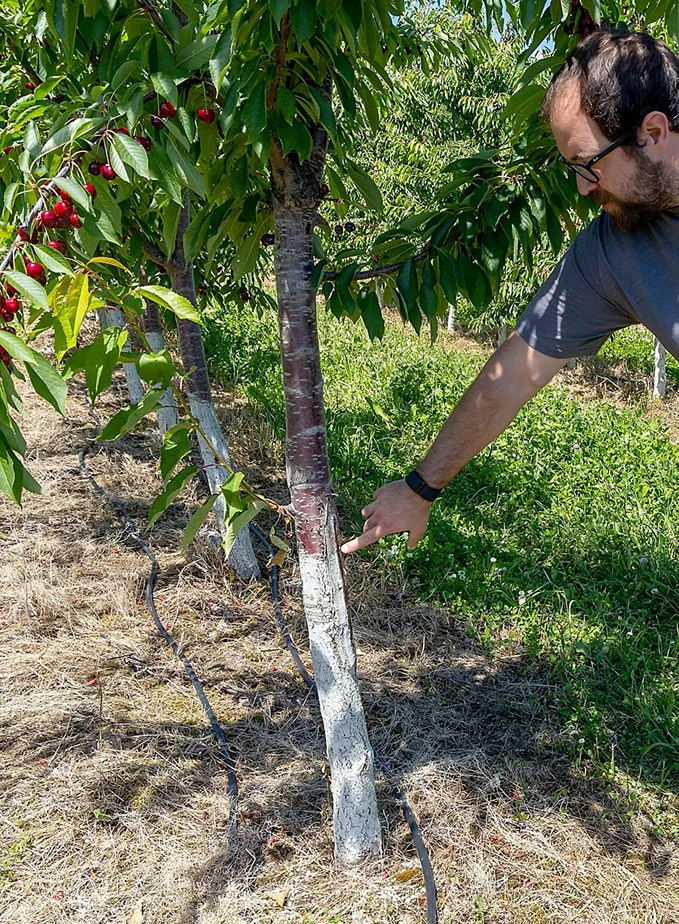 Image 2: Grower Isaiah Wunsch points out the sun-induced cracking that can occur in vigorous growing trees in winter. White paint reflects sunlight to protect against cracking. (Matt Milkovich/Good Fruit Grower).
Image 2: Grower Isaiah Wunsch points out the sun-induced cracking that can occur in vigorous growing trees in winter. White paint reflects sunlight to protect against cracking. (Matt Milkovich/Good Fruit Grower).
A high-density trial planted in 2015 performed well, so they put in more substantial plantings starting in 2019, including the Black Pearls. With a few years of experience behind them, they now prefer Gi.6 because Gi.5 is too weak for their sandy soils. The 2019 blocks are starting to yield decent-sized crops, whereas some of their cherries planted in 2018 with standard 18- by 20-foot spacing aren’t yet producing, Wunsch said.
They chose a freestanding, tall spindle axe system for their high-density plantings. They wanted something worker-friendly that would give them consistent fruit size, quality and maturity.
The high-density learning curve is steeper than with standard plantings, especially early on, when some varieties start yielding by the third or fourth leaf and others take longer. On the dwarfing Gisela rootstocks, the trees also require daily watering. Vigor varies by variety, so pruning practices must vary, too, Wunsch said.
High-density establishment costs are higher, but the trees start producing sooner and are more labor-efficient in the long run. High-density cherries are also less susceptible to brown rot, because the smaller canopies dry faster and are easier to spray, Wunsch said.
After an aggressive round of planting, they’re slowing down on putting in new blocks, but they plan to continue with more modern plantings in the future. They planted their last standard sweet cherry block in 2018, Gomez said.
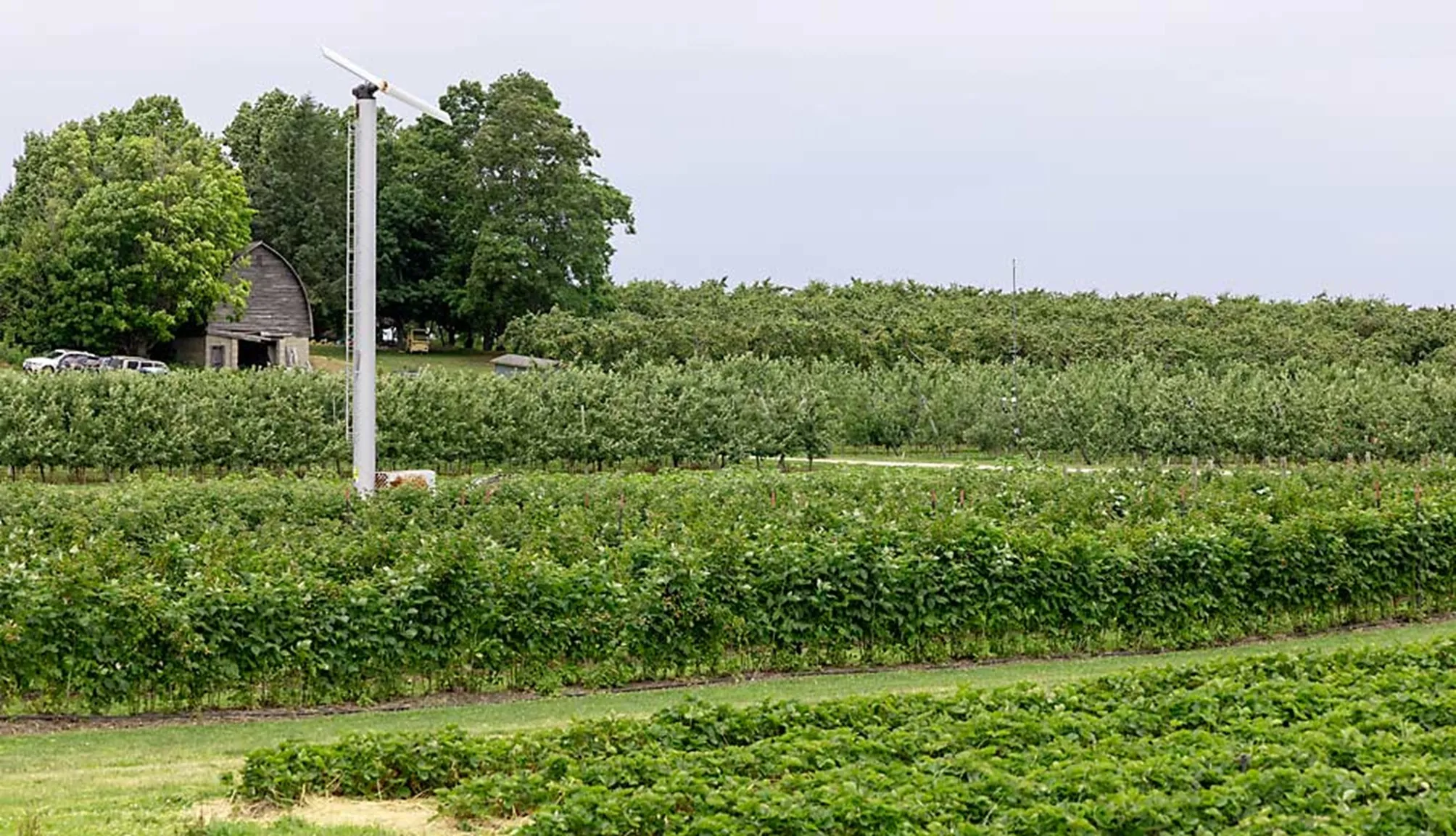 Image 3: King Orchards in Antrim County, Michigan, grows many crops for retail and wholesale. In the foreground are strawberries, above them raspberries, then apples and, in the top right, sweet cherries. About 35 years old, the block of sweet cherries is mainly used for U-pick. (Matt Milkovich/Good Fruit Grower).
Image 3: King Orchards in Antrim County, Michigan, grows many crops for retail and wholesale. In the foreground are strawberries, above them raspberries, then apples and, in the top right, sweet cherries. About 35 years old, the block of sweet cherries is mainly used for U-pick. (Matt Milkovich/Good Fruit Grower).
Farther east in Antrim County, King Orchards needs a lot of cherries to keep its pie, juice, farm market and U-pick sales going, grower Mark Schiller said.
King Orchards planted its first high-density sweet cherry trees eight years ago. They chose Gi.6 rootstock, spaced 6 feet by 12 feet. They like the Pearl series of varieties for their size, flavor, texture and early ripening, Schiller said.
High-density plantings on the more precocious and dwarfing roots have two big advantages: They yield quality fruit and speed up harvest.
“We can get lugs in and out faster than climbing 12-foot ladders,” Schiller said.
Fresh sweet cherries have been a “hot item” for the orchard in the past few years. In one of the new high-density blocks, the original plan was to have their workers hand-pick fruit and sell it to other retail stands and wholesalers, but when they had their biggest cherry crop ever in 2023, they decided to invite U-pick customers to help get all the fruit off the trees. The cherries were so popular that they decided to turn that block into a long-term U-pick block. Farm crews use a platform to clear the tree tops that customers can’t reach, he said.
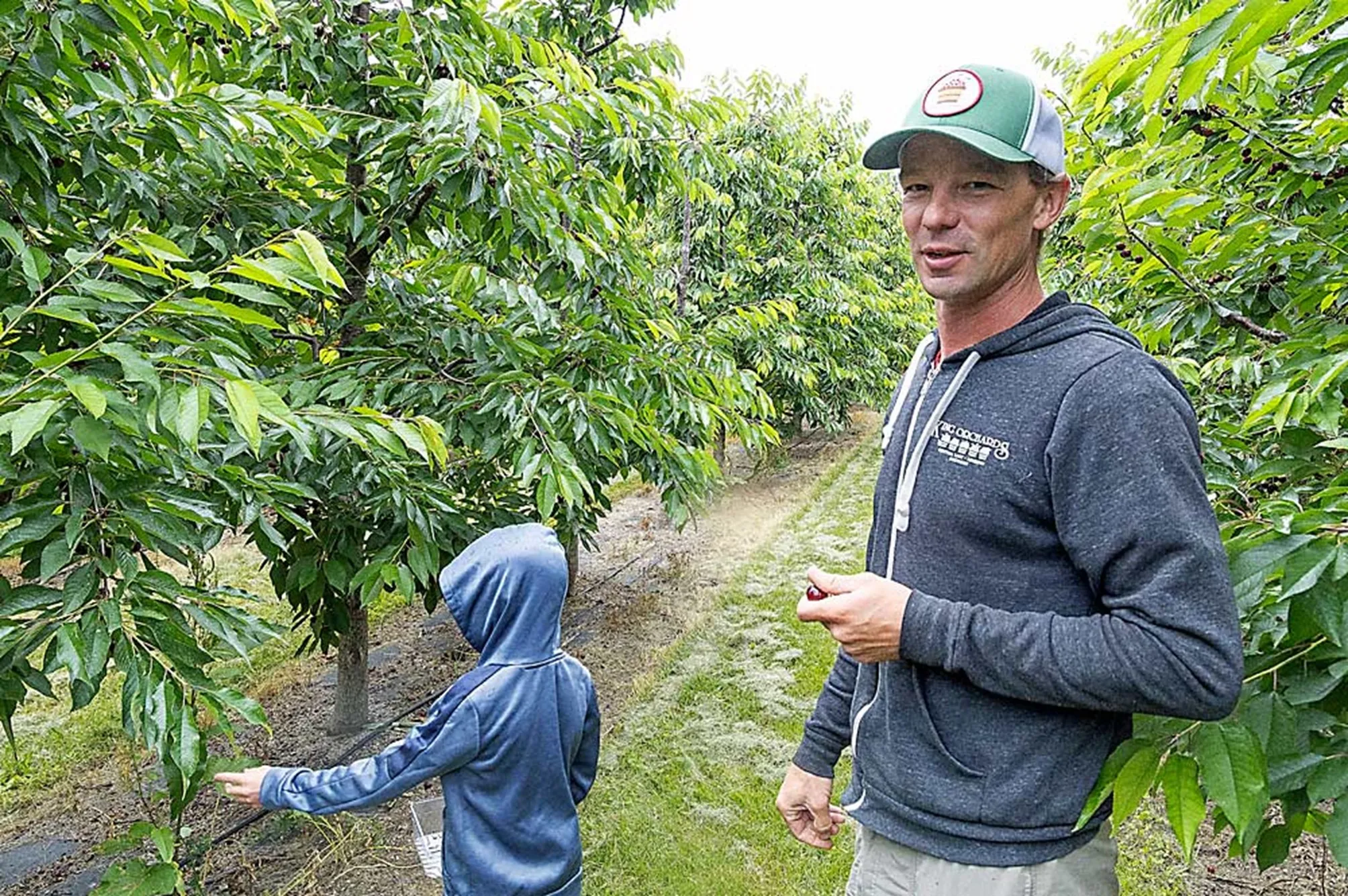 Image 4: Grower Mark Schiller, with the help of one of his sons, talks about a high-density block of sweet cherries. The cherries are so popular with customers that the farm has turned them into a U-pick block. (Matt Milkovich/Good Fruit Grower).
Image 4: Grower Mark Schiller, with the help of one of his sons, talks about a high-density block of sweet cherries. The cherries are so popular with customers that the farm has turned them into a U-pick block. (Matt Milkovich/Good Fruit Grower).
Schiller said it takes a lot of labor to hoe, weed, water, trim and pick high-density cherry trees. King Orchards is big enough to handle the extra work but still struggles to stay on top of it all. It’s worth it, though, when the fresh-market sweet cherries fetch higher prices.
“You can’t send them to a processor and make money, unless you are the processor,” Schiller said. “U-pick cherries are one of the best ways to add value to what you’re growing.
Images: Matt Milkovich, Good Fruit Grower
Matt Milkovich
Good Fruit Grower
Cherry Times - All rights reserved









